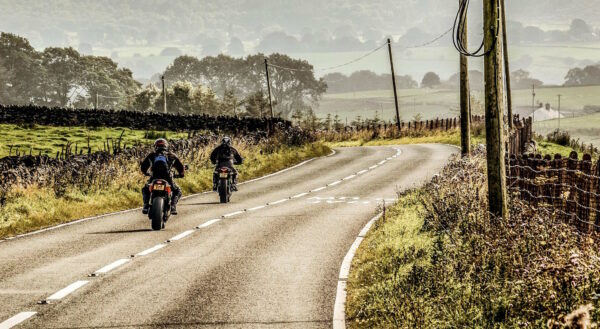UK number plates
UK number plates are vital identifiers on UK roads, aiding identification and law enforcement. The government mandates specific rules to ensure readability, safety, and consistency. This article outlines legal requirements for number plate sizes, addressing essential aspects for a range of different vehicles.
Number plates for motorcycles

Precisely defined by the Department for Transport (DfT), adhering to these dimensions ensures legibility and visibility regarding motorcycles:
- Character Height: 64mm
- Character Width: 44mm
- Space Between Characters: 10mm
- Space Between Rows: 13mm
These dimensions balance aesthetics and function while ensuring uniformity. The overall, smallest legal allowable dimensions of the plate will depend on the registration number itself due character requirements above.
Number plates for cars
Similar requirements need to be met for UK cars; the main differences are the character sizes, these are:-
- Character Height: 79mm
- Character Width: 50mm
- Space Between Characters: 11mm
- Space Between Rows: 19mm
However, the overall dimensions of the number plate can vary depending on the number of characters.
Legal considerations for number plates
Adhering to legal requirements for number plates, relating to BSAU 145e is crucial:
- Legibility: Plates must be readable by humans and ANPR systems, using a mandated typeface for consistency.
- Reflectivity: Plates must be constructed using reflective materials conforming to British Standards, enhancing visibility.
- Background and borders: A white the front, or yellow background for the rear plate is mandatory. However, vehicles older than 1980 can have black and silver plates.
- Supplier information: Plates must display the manufacturer’s details, postcode, and legal markings.
- Durability: Plates should be able to resist specific impact, bending, heat, abrasion and general weathering to ensure longevity and readability.
- Colour of characters: All number plate characters must be black only. Prior to September 2021, number plate manufacturing companies could supply ‘neon’ number plates which came in various colours which were classified as legal. However, these are not legal anymore.
Although some number plate styles are deemed to be illegal, motorists can express their individuality with private number plates. Private registrations can be purchased from the DVLA to be used on vehicles. Not only this, but number plates such as 3D number plates can legally be used on UK roads.
When purchasing a number plate, it is legally required that the supplying outlet records paperwork for that specific transaction. Accepted documentation include, but not limited to, the following:-
Proof of ID:
- Driving licence
- Utility, telephone or council tax bill
- A bank or building society statement
- Passport
- Foreign National Identity Card
- Debit or credit card
- A police warrant card
- An armed forces identity card
Proof of ownership:
- Registration Certificate (V5C)
- Tear off slip V5C/2 section 10 of the V5C
- Certificate of entitlement to a mark (V750)
- Cherished transfer retention document (V778)
- Vehicle licence renewal form (V11)
- Temporary registration certificate (V379)
- Authorisation Certificate (V948) with Official DVLA stamp
- A letter of authorisation from Fleet Operators (including a lease/hire company) quoting the document reference number from the V5C
- Record of the insurer’s name, reference and policy number (for repairs approved by an insurance company).
Conclusion
Understanding legal requirements for UK number plates is crucial for UK motorists. Not complying can result in fines. Adhering to required sizes and design specs ensures compliance and road safety. Precision in dimensions, legibility, reflectivity, and supplier information are vital. While most UK sellers are authentic who offer legal styling options, due diligence is still required to ensure motorists are not buying illegal number plates.
